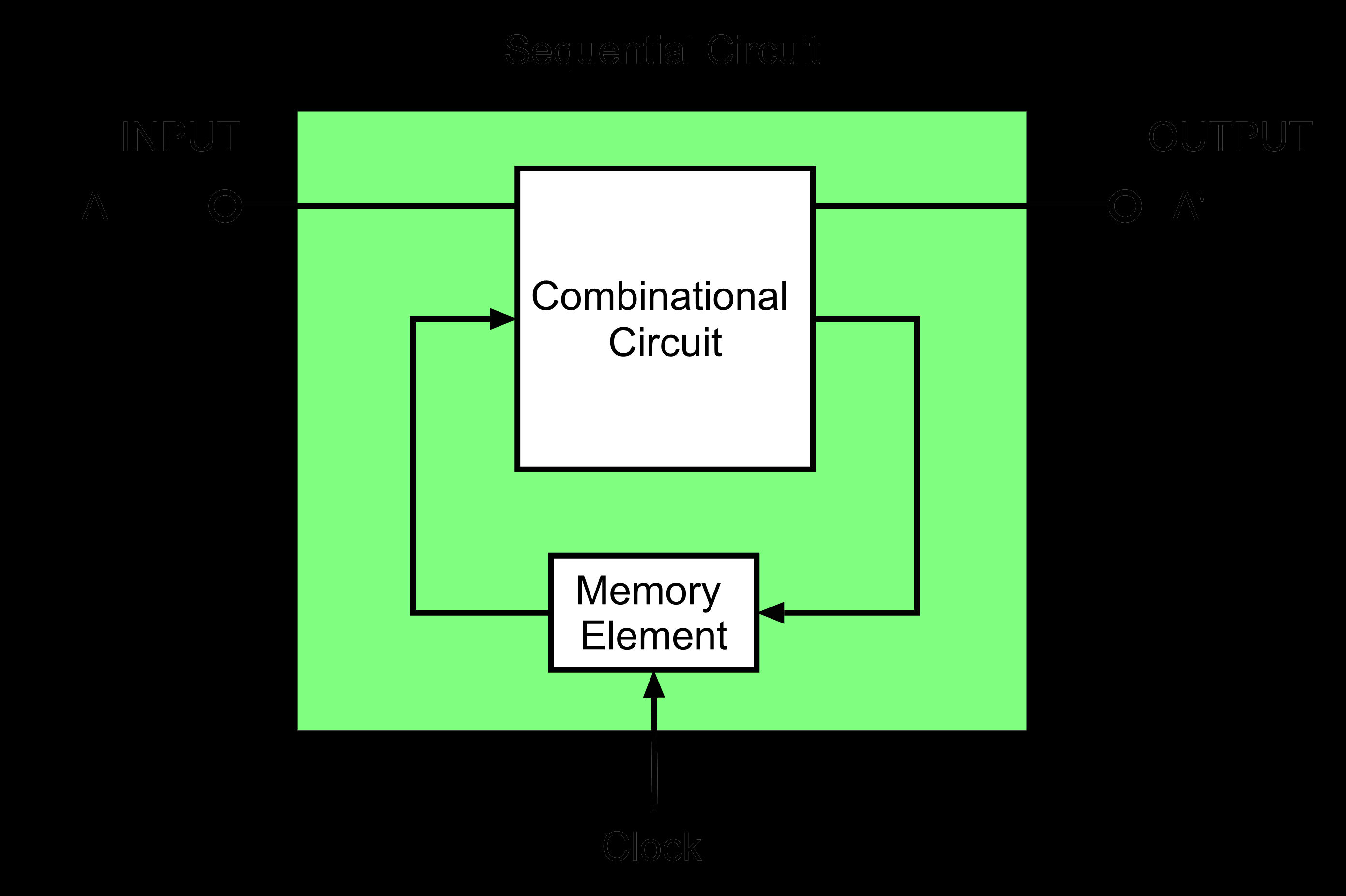What is a sequential circuit?
Sequential Logic Circuits
What is a sequential circuit?
The sequential circuit is a special type of circuit with a sequence of inputs and outputs. The outputs of the sequential circuits depend on the combination of the current inputs and the previous outputs. The previous production is viewed as the current condition. Thus, the sequential circuit includes the combination circuit and its memory storage components. A sequential circuit does not necessarily have to contain a hybrid circuit. So, the sequential circuit can only contain a memory part.
Unlike sequential logic circuits, the outputs of which are dependent on both their current inputs and their previous output status, giving them a form of memory. The outputs of the combinational logic circuits are determined only by the logical function of their current input state, logic "0" or logic "1," at any given moment in time.
As a consequence, the combination logic circuits have no feedback, and any modifications to the signals being added to their inputs would automatically have an effect on the output. In other words, in the combinational logic circuit, performance depends on the combination of its inputs at all times. Thus, the hybrid circuit is memoryless.
So if one of the input conditions shifts the state from 0-1 or 1-0, the resulting output as default combination logic circuits would have "no memory," "time" or "feedback loops" within their architecture.
Combinational Logic
Combinational logic circuits are made up of simple logic NAND, NOR or NOT gates that are "combined" or wired together to create more complex switching circuits. These logic gates are the building blocks of the combination logic circuits. An example of a combination circuit is a decoder that transforms the data of the binary code present at its input into a series of separate output lines, one at a time generating an analogous decimal code at its output.
Combinational logic circuits can be very basic or complex, and any combination circuit can only be implemented with NAND and NOR gates, since these are known as "universal" gates.
The three key ways to define the purpose of a combination logic circuit are as follows:
1. Boolean Algebra – This is the algebraic expression that indicates the function of the logic circuit for each input variable, either True or False, resulting in a logic output of "1." 2. Truth Table – The truth table describes the purpose of the logic gate by presenting a succinct list that displays all the output states in tabular form for each possible combination of input variables that the gate can encounter. 3. Logic Diagram – This is a schematic illustration of a logic circuit that displays the wiring and connections of each particular logic gate, represented by a particular graphic symbol that executes the logic circuit.
What is sequential logic?
In digital circuit theory, sequential logic is a type of logic circuit whose output depends not only on the present value of its input signals, but also on the sequence of past inputs, the background of inputs. This is in contrast to the combination logic, the result of which is the function of the current input only.
What are the types of sequential circuits?
There are two types of sequential circuit, synchronous and asynchronous. Synchronous types use pulsed or level inputs and a clock input to drive the circuit (with restrictions on pulse width and circuit propagation). Asynchronous sequential circuits do not use a clock signal as synchronous circuits do.
Sequential asynchronous circuits
The asynchronous sequential circuits do not use clock signals. The asynchronous circuit is regulated by pulses. So, changes to the input will alter the circuit state. Asynchronous circuits do not use clock vibration. When the input variable is changed, the internal state is changed. Un-clocked or time-delayed flip-flops are memory features in asynchronous sequential circuits. The asynchronous sequential circuit is similar to that.
Sequential synchronous circuits
Using clock signal, state changes will occur across all storage elements. These circuits are a bit slower compared to asynchronous because they wait for the next clock pulse to arrive to perform the next operation. These circuits can be clocked or pulsed.
Example of sequential circuit
Flip Flop
It is an example of a sequential circuit that produces output depending on the inputs sampled and adjusts output at some time intervals, but not regularly. Flip Flop is an edge sensitive system
Flip Flop S-R
S-R flip-flop is a mixture of NAND gates and allows input. Output is generated only if the allow input is in active mode, i.e. E=1.1. Whereas when E=0, the output does not shift.

